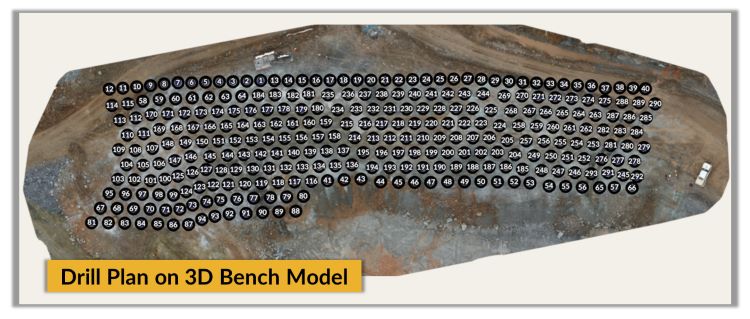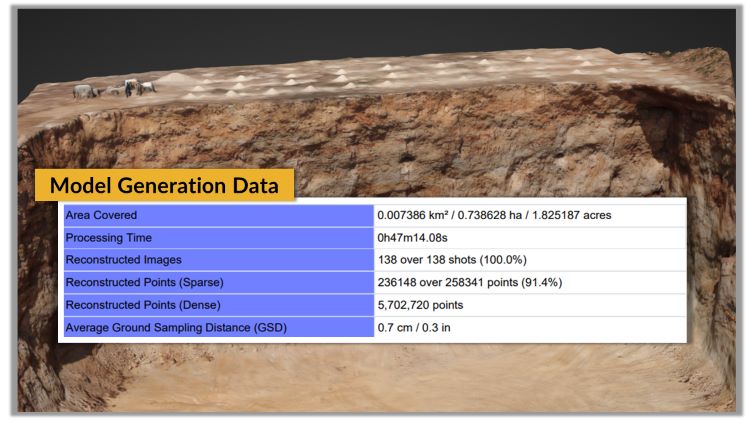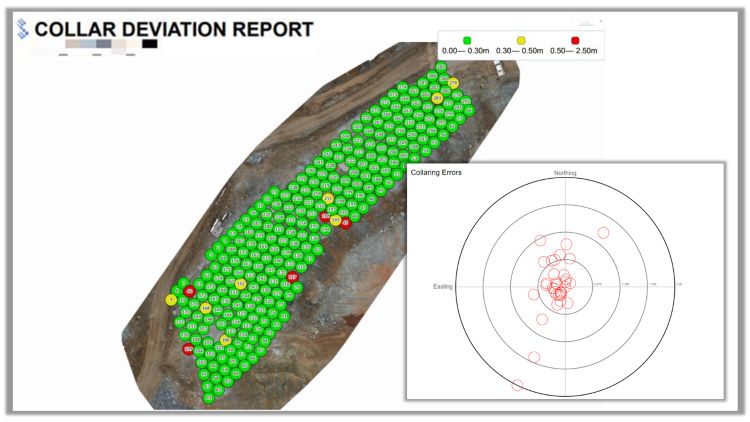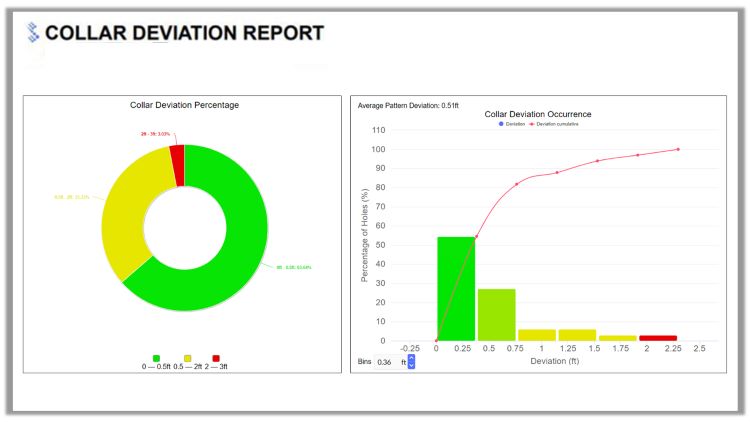3 Reasons to Use Post-drill Quality Control for Blast Optimization
Post-drill QA/QC is one of the most effective data points for overall blast optimization, but the QA/QC of each hole and precise deviation analysis has traditionally been time-consuming and labor-intensive. Now, drill hole detection AI automates the QA/QC process and generates pattern deviation in a few seconds rather than hours of manpower. Rather than staking out actual locations with GPS equipment, drones can capture images of benches to build 3D models. All this in a fraction of the time while keeping personnel off the bench. Using photogrammetry with AI to capture the actual drill hole locations to then import into the bench’s digital twin allows significant additional value to be realized.
Tracking the drilling accuracy over time provides valuable metrics on drill and blast performance that create measurable downstream operational improvements. Drill Hole Detection AI helps you understand 1. if the drillers are accurately setting up the pattern, 2. which changes need to be made in shot parameters, and 3. The needed adjustments to the loading and charging of heavier/lighter spacings.
1. Determining Pattern Set-up Accuracy
With today's technology, drilling accuracy can be justified and proven thanks to GPS. When digitally designing a blast using a 3D model, to export to a drill or GPS for layout, pattern accuracy on the ground will reflect the engineer's plan with high accuracy. When drilling holes, there are many times when drillers cannot place a hole in the desired location due to conditions on the bench. Factors such as back break along the crest, water ponding, overburden or shot rock creating collaring issues, or collapsed holes will influence a hole to be placed in the vicinity of the planned location. Measuring these deviations and evaluating the accuracy of the drill will assist blasters in their loading operations and provide a measurable metric of the drill's performance.

2. Adjustments to the Loading & Charging of Heavier/Lighter Spacings
Some factors that influence a designed blast pattern are geology on site, drill depth or bench height, and desired outcome of fragmentation (to name a few). The term Powder Factor also comes into play, where the amount of explosives per cubic yard of rock is calculated per borehole and also for the entirety of the shot. When we see deviations in the drill pattern, either heavier or lighter burdens, and spacings, the rock will react differently than anticipated if not accounted for.
For example, let’s say there is a 14’ x 14’ drill pattern on a 50’ bench with a 6’’ to be loaded with bulk emulsion at 1.25g/cc. Stemming will be 10’. Our powder factor per borehole will be 1.81 lb/cy. Now if we have deviations in our drill pattern which turn the 14’x14’ pattern to an 11’x12’ pattern in areas, without any loading adjustments to account for the change, our Powder factor rises to a 2.69 lb/cy. This can create several issues when firing the shot, from fly rock to poor shot performance.
3. Drill Hole AI Detection in Action
In the example below, a drone flight was conducted capturing a total of 138 images, processed in 47 minutes with AI detection. In comparison, a manual survey of similar size and scale could take upwards of an hour or longer to collect data, on top of running further analysis and comparison after surveying.

Once images of a bench are captured with a drone post drilling, the images will feed Strayos’ AI Collar detection. The detected boreholes will appear, with the option to then overlay the design on top. Based on the detected boreholes, a threshold can be set to show the surface deviations in comparison to the designed blast.

In the example above, we see that the green values are showing deviations from design to actual in the range of 0’ - 0.5’. The yellow values are showing a 0.5’ - 2’ deviation, followed by a 2’ -3’ deviation range shown in red. This information can then be downloaded in an auto-generated report with output graphics shown below.


Conclusion
If drone surveying is already a part of your operational workflow, and measuring the quality of drilling performance is a KPI in your operation, AI can save critical hours while providing the deliverables needed to track the performance of your drill.

Check out our 2 Free E-books on AI applications for the drilling, blasting, and mining industries to see all the amazing advances that are available.
AI Guide for Drilling and Blasting
AI Guide for Mining
TLDR? Watch our videos instead:
YouTube
Follow us on:
Facebook
Twitter | X
LinkedIn
